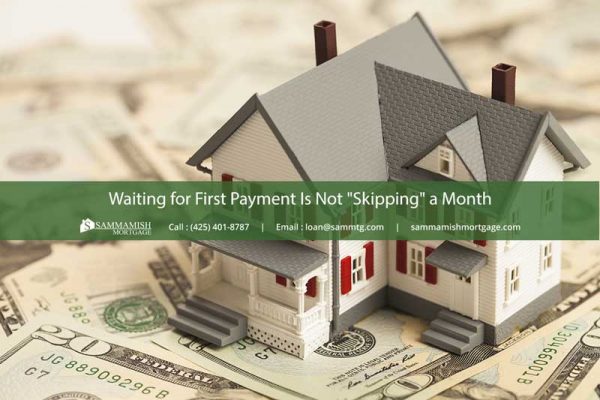No Obligation and transparency 24/7. Instantly compare live rates and costs from our network of lenders across the country. Real-time accurate rates and closing costs for a variety of loan programs custom to your specific situation.

Because many weeks might elapse between closing on a refinance and making the first payment, some borrowers are led to believe that they “skip” a month of payments. This is false. Because mortgage remittances cover the previous month’s interest, any monies owed until that month are paid at closing.
Let’s face it: mortgage lenders are in business to make money from their money. To do so, they need qualified customers to buy their product — loans secured by property. Bringing such trustworthy borrowers in requires a very large net of multiple sales and marketing campaigns. Some lenders, for better or for worse, will make statements that are true in the technical sense but often received by the public to mean something very different. Such is the case with promising applicants the luxury of skipping a payment when they refinance their homes. Pushing back a payment is far from skipping one.
When signing closing documents, borrowers will find the date of their first payment in the promissory note and the first payment letter documents. If the closing is on the second of February, for example, monies are not disbursed for three business days. If the second falls on Monday then funds go out on Friday, the sixth. This three-day interval is the recission period granted to refinance borrowers by the federal Truth in Lending Act of 1968. This allows borrowers time to review the documents and terms with loan officers, attorneys and financial advisors. They can cancel the mortgage during this time if they choose to do so. This is important because, in a refinance, the disbursement date determines the first payment date.
Using the example above, the loan closes on the 2nd of February and disburses on the 6th. The first payment, then, is scheduled for April 1st. Why? What about March 1st? Is the borrower skipping a payment here? No. For one thing, he or she pre-pays at closing all interest charged between February 6th through the 28th (or 29th). Still, what about the full payment of principal, interest, along with tax and insurance escrows. It seems like the borrower gets a pass for the month of March. Yet “seems” is all it does. If a refinance customer takes a 30-year mortgage — i.e. 360 monthly payments — then that same borrower is obligated to make 360 monthly payments, not 359.
Borrowers often receive an amortization schedule among the many documents they sign at settlement. This form lists every single payment to be made over the life of the loan. It breaks down each remittance, as well, showing the ratio of interest to principal for each payment. For a 30-year mortgage it will represent 360 payments. Unless a homeowner pays the loan off through subsequent refinance — or prepays the loan by making augmented reimbursements to the lender — each and every payment is required and expected. This begs the question, however. Why does more than a month elapse before the first payment.
When a homeowner closes on February 2nd and the loan disburses on the 6th, the new loan is used to pay off the old one. Prior to the closing, the settlement agent has up-to-date payoff instructions from the lender. In addition to the outstanding balance, these directions show how much is owed in interest from February 1st through the sixth. The prepaid interest collected at closing covers the new loan’s interest charges from the 7th to the 28th. This means that all interest owed in February gets paid in February. Again, what about March?
Not immediately evident is the fact that mortgage interest is paid down in arrears. That April 1st date for first payment is the day the borrower pays for March — the first full month of the new loan. May 1st then pays for April, and so on, and so on until the loan is paid in full. Unlike an apartment renter, who pays the landlord for the ensuing month, the mortgagor pays for the month just completed. So, after meeting all of the interest charges due at closing, homeowners owe nothing on their refinance until after the next full month elapses.
One caveat, though: Should the refinance proceeds disburse on the 1st of the month, then the first payment is due on the first day of the very next month, e.g. funds available on February 1st and payment made on March 1st because no prepaid interest is due at closing. Either way — through prepaid collection or monthly receipts — the lender will get all the interest owed.
Adding extra funds to what is due each month according to the terms of the loan will, of course, re-adjust the amortization schedule. Consistently doing so, month after month, will result in paying the loan down faster. Unless, however, the terms of the promissory note specifically allow for refraining from remittances in lieu of overpayment, borrowers are obliged to continue making their payments as scheduled. Most mortgage servicing is highly computerized. The algorithms that govern servicing operations will in fact reflect the surplus payments of previous months. They do not, however, factor them into current billing. Paying the loan off early does, nevertheless, spare an eager borrower payments at the back end of the loan.
In fact, people seek mortgage forbearance because they already have skipped a month…or two, or three. Contrary to popular opinion, lenders do not like foreclosing on their collateral properties. As devastating as it can be for homeowners, it is also a financial loss for banks and finance companies. Forbearance is a way to mitigate such losses. When entering into a forbearance agreement, the lender may reduce or suspend payments as part of a larger plan that brings the delinquent borrower up-to-date by an agreed-upon date. Accordingly, it can help borrowers through transitory financial setbacks. Forbearance in no way frees the borrower from the obligation to pay off the loan.
Those wondering if and when a mortgage payment is ever waived do well to consult with an experienced loan officer. He or she can explain amortization, paying in arrears, and other concepts peculiar to this enterprise. Being informed is the best position before signing any settlement documents.
Sammamish Mortgage has been in business since 1992 and is here for you. Sammamish Mortgage is based in the Pacific Northwest and offers a host of high quality mortgage loan programs in Colorado, Idaho, Oregon, and Washington.
If you’d like to get a Rate Quote, you can Contact Us We are here for you and can explain the entire process to you. If you would prefer, you can also View Rates on our site. Or, if you are ready, you can Apply Instantly or get a Rate Quote.


Whether you’re buying a home or ready to refinance, our professionals can help.
{hours_open} - {hours_closed} Pacific
No Obligation and transparency 24/7. Instantly compare live rates and costs from our network of lenders across the country. Real-time accurate rates and closing costs for a variety of loan programs custom to your specific situation.